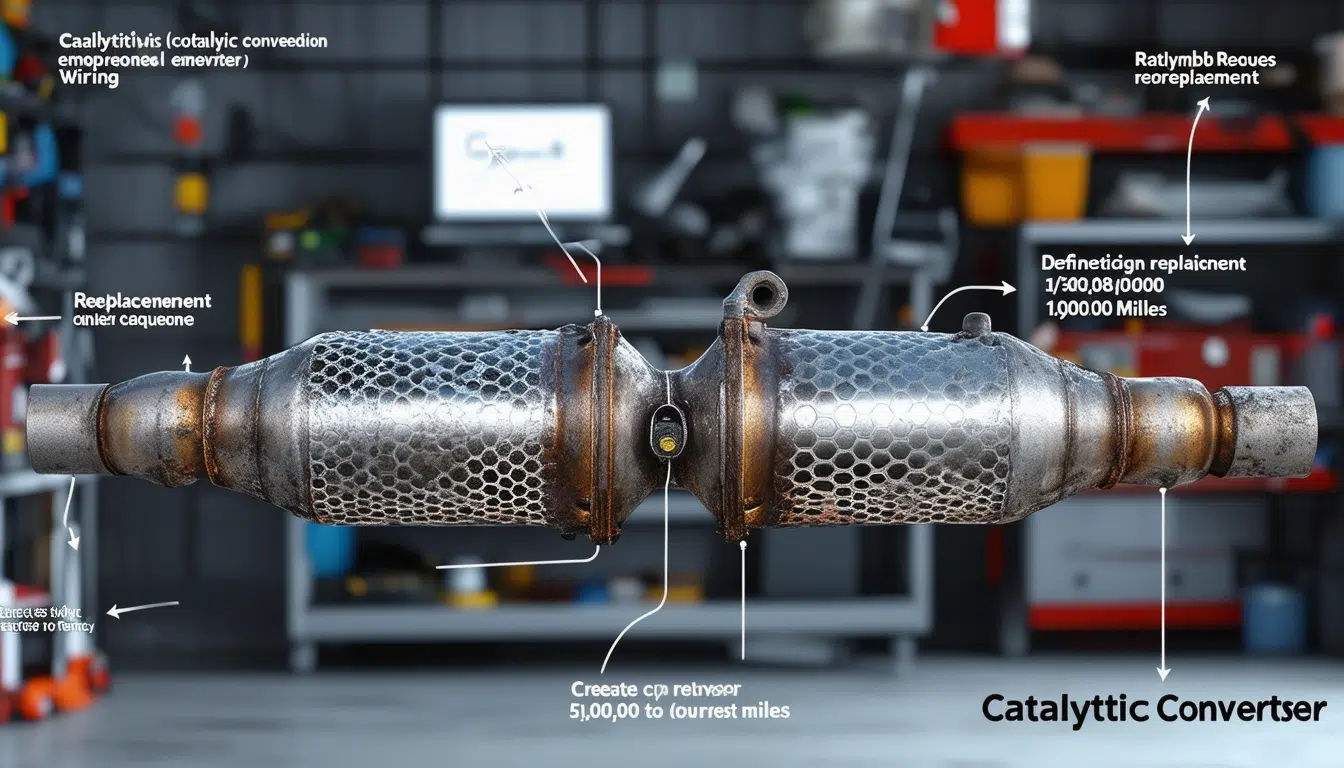Catalytic converter: Definition, operation, and replacement frequency

The automotive catalyst is an essential component of the exhaust system whose main function is to reduce the emission of polluting gases. Installed more than three decades ago, its environmental importance is crucial. This device, made of special materials, helps to convert toxic gases into harmless substances for the environment. Knowing how it works and when to replace it is fundamental to maintaining vehicle efficiency and contributing to environmental care.
The catalyst is an essential component of a vehicle’s exhaust system, whose main purpose is to reduce the toxic emissions generated by internal combustion engines. This article will explore in detail its definition, how it works, and when it needs to be replaced.
Definition of the Automotive Catalyst
The catalyst is an emissions control device that is installed in the car’s exhaust system. Its primary function is to decrease the percentage of contaminating gases expelled into the environment through a chemical reaction process. Catalysts have been mandatory in vehicles for approximately 30 years due to their importance in reducing environmental pollution.
How the Catalyst Works
The catalyst works efficiently by transforming harmful gases into less contaminating elements through a chemical process known as catalysis. It consists of a core, usually made of ceramic or metal, coated with a layer of precious metals like platinum, palladium, and rhodium. These metals act as catalysts for the chemical reactions that convert toxic gases into harmless substances.
Exhaust gases enter the catalyst at high temperatures, where compounds like carbon monoxide (CO), hydrocarbons (HC), and nitrogen oxides (NOx) are broken down. These gases are converted into carbon dioxide (CO2), water (H2O), and nitrogen (N2), which are considerably less harmful to the environment.
Replacement Frequency of the Catalyst
The lifespan of a catalyst can vary depending on the manufacturer and the use of the vehicle, commonly ranging between 60,000 and 100,000 kilometers. However, several factors can influence its lifespan, such as driving habits, the quality of fuel used, and vehicle maintenance.
It is crucial to be alert to the symptoms of a faulty catalyst, such as reduced engine performance, increased fuel consumption, and the emission of exhaust gases with a strong and unpleasant smell. If there is a suspicion that the catalyst is not functioning properly, it is essential to seek a professional for inspection and possible replacement.
Failing to replace the catalyst in a timely manner can result in additional damage to the vehicle and significantly contribute to environmental pollution. Additionally, in many regions, it is illegal to drive a vehicle with a defective catalyst.
For more information on automotive safety and other technical aspects, we recommend visiting articles such as These advancements in automotive safety could save your life, impressive explosion in the car distribution area in Texas, and Definitive ranking of cars according to experts.
Conclusion: Automotive Catalyst – Definition, Operation, and Replacement Frequency
The automotive catalyst is defined as a fundamental device in the exhaust system, specifically designed to reduce the emissions of contaminating gases. Its main function is to convert the toxic gases produced by the engine into less harmful substances before they are released into the environment. This component is essential for complying with environmental regulations and contributing to cleaner air.
The operation of the catalyst is based on chemical reactions that take place inside it. When exhaust gases pass through the catalyst, they interact with the catalytic materials—generally platinum, palladium, and rhodium—that promote the conversion of carbon monoxide, nitrogen oxides, and unburned hydrocarbons into carbon dioxide, nitrogen, and water. This process significantly reduces the toxicity of the gases emitted by the vehicle.
The frequency of catalyst replacement depends on several factors, including driving type and the quality of fuel used. Generally, the lifespan of a catalyst is estimated to be between 60,000 and 100,000 kilometers. However, some symptoms like a reduction in engine performance, the illumination of the engine fault indicator, and a noticeable increase in emissions may indicate that a replacement is necessary.
Not replacing a defective catalyst can lead to increased pollution, fines for non-compliance with regulations, and damage to the exhaust system and the vehicle’s engine itself. Therefore, it is vital to carry out regular checks and maintain a proper driving style to prolong the lifespan of this important component.
In conclusion, the catalyst is an indispensable part of any modern automobile, playing a crucial role in protecting the environment by reducing the emissions of contaminating gases. Its correct functioning and timely replacement are essential not only for the health of the vehicle but also for that of the planet.




